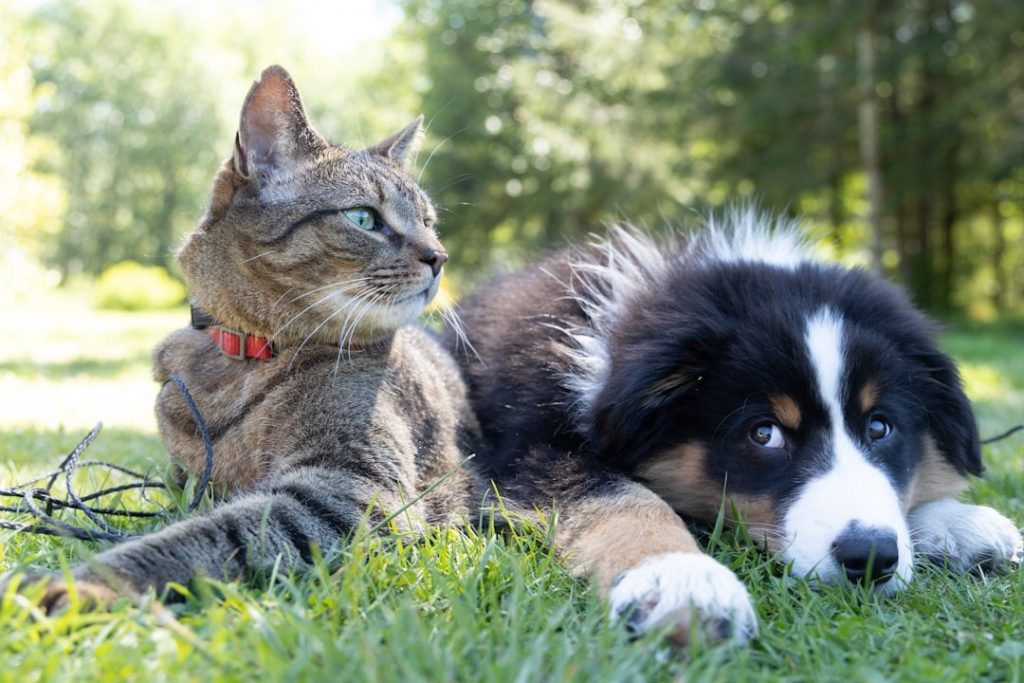Physical Address
304 North Cardinal St.
Dorchester Center, MA 02124
Physical Address
304 North Cardinal St.
Dorchester Center, MA 02124

Aging pets have changing needs. They may not be as quick or get up from a jump as well but their interest in going and checking it out is still there. Mentally stimulating senior pets isn’t just about having fun, but it’s also about preserving their cognitive health and reducing anxiety and keeping them emotionally on track. Just as with people, it can be a sad reality that animal companions can mentally decline in old age, but you shouldn’t let it happen and provide them the stimulation they need to thrive in their golden years.
Senior pets often display changes such as slower movements, reduced stamina, gray fur, and altered sleep cycles. Recognizing these signs early helps you provide better care.
Aging pets may experience joint stiffness, vision loss, or even cognitive dysfunction syndrome (CDS) , a pet equivalent of dementia. They may appear confused, restless, or forgetful.
Senior pets need reassurance, comfort, and bonding time. They thrive when they feel included and mentally engaged.
Interactive play helps maintain mobility, encourages gentle exercise, and reduces the risk of obesity in aging pets.
Just like puzzles help older adults, mental games for pets strengthen memory, decision-making, and learning ability.
Keeping pets engaged reduces loneliness, anxiety, and depression. It creates a happier, calmer pet.
Studies show that enriched pets live longer, healthier lives because stimulation improves both mental and physical well-being.
Games and toys that require thinking help pets stay sharp.
Teaching new commands or tricks provides mental exercise and builds confidence.
Activities that stimulate smell, sight, and hearing keep senior pets engaged.
Interacting with humans and other pets fosters emotional well-being.
Toys that hide treats challenge pets to think critically and problem-solve.
Food-dispensing balls or feeders make eating an exciting activity rather than a routine.
Modify fetch with soft toys, ensuring the game is safe for pets with joint issues.
Feather wands, laser pointers, and motorized toys encourage cats to stay active and alert.
Simple tricks like “shake,” “spin,” or “touch” keep older dogs mentally active without being physically demanding.
Reinforcing commands like “sit,” “stay,” and “come” keeps their training sharp and strengthens obedience.
Teaching cats to respond to clicker training or target training boosts their intelligence.
Food-based rewards keep senior pets excited about learning new skills.
Hide treats around the house and encourage sniffing games to stimulate their strongest sense.
Sprinkle catnip or hide kibble around scratching posts to create a playful scent adventure.
Window perches let cats watch birds, while dogs enjoy observing activity outdoors.
Calming music, audiobooks, or nature sounds reduce stress and enrich your pet’s auditory senses.
Switching toys every few days prevents boredom and renews interest.
Set up cozy corners with blankets, beds, and safe toys to make them feel secure.
Supervised backyard play or short walks provide new smells and sights.
A cat tree near a window allows safe bird-watching and visual engagement.
Quality time—cuddling, brushing, or playing—strengthens your relationship.
Gentle, supervised interactions with familiar pets promote social enrichment.
Senior-friendly strolls in parks expose pets to new environments without exhausting them.
Low-energy daycare sessions give pets companionship and supervised play.
A predictable routine reduces stress and confusion in senior pets.
Using slow feeders or food puzzles makes mealtime stimulating.
Gentle walks with plenty of sniffing time provide both physical and mental stimulation.
A calm routine before bed helps senior pets relax and sleep better.
Choose low-impact activities and lightweight toys that won’t strain joints.
Simplify activities and focus on shorter, more frequent play sessions.
Avoid toys that are too small or sharp, reducing the risk of injury.
Always consult your vet before introducing new enrichment, especially for pets with health conditions.
Diets rich in omega-3 fatty acids and antioxidants support brain health.
Veterinarians may recommend supplements like glucosamine, fish oil, or probiotics.
Encourage frequent water intake to prevent dehydration in aging pets.
Provide orthopedic beds and warm blankets to support relaxation.
Create homemade puzzles using cardboard boxes, muffin tins, and tennis balls.
Gentle indoor obstacle courses encourage movement and problem-solving.
Interactive cameras and smart feeders allow play even when you’re away.
Pet massages improve circulation, reduce anxiety, and strengthen bonds.
Why is mental stimulation important for senior pets?
It helps prevent cognitive decline, reduces stress, and improves overall quality of life.
How often should I stimulate my senior pet mentally?
Daily sessions of 10–20 minutes are ideal, depending on your pet’s health.
Can senior pets still learn new tricks?
Yes! With patience and positive reinforcement, older pets can continue learning.
What are the safest toys for older pets?
Soft, lightweight, and puzzle-based toys are best for aging pets.
Do senior cats need mental stimulation too?
Absolutely. Cats benefit from climbing, scratching, and interactive play.
Can mental stimulation replace exercise?
No, but it complements physical activity, ensuring complete enrichment.
Your senior pet’s golden years should be full of relaxation, love and enrichment. You can help keep their minds active, reduce anxiety and become even closer with senior pets through mental stimulation. From puzzle toys and scent games to daily bond-loading, every bit adds up to make their lives that much richer and happier. Keep in mind: a well-exercised brain means a healthier, longer life for your best friend.